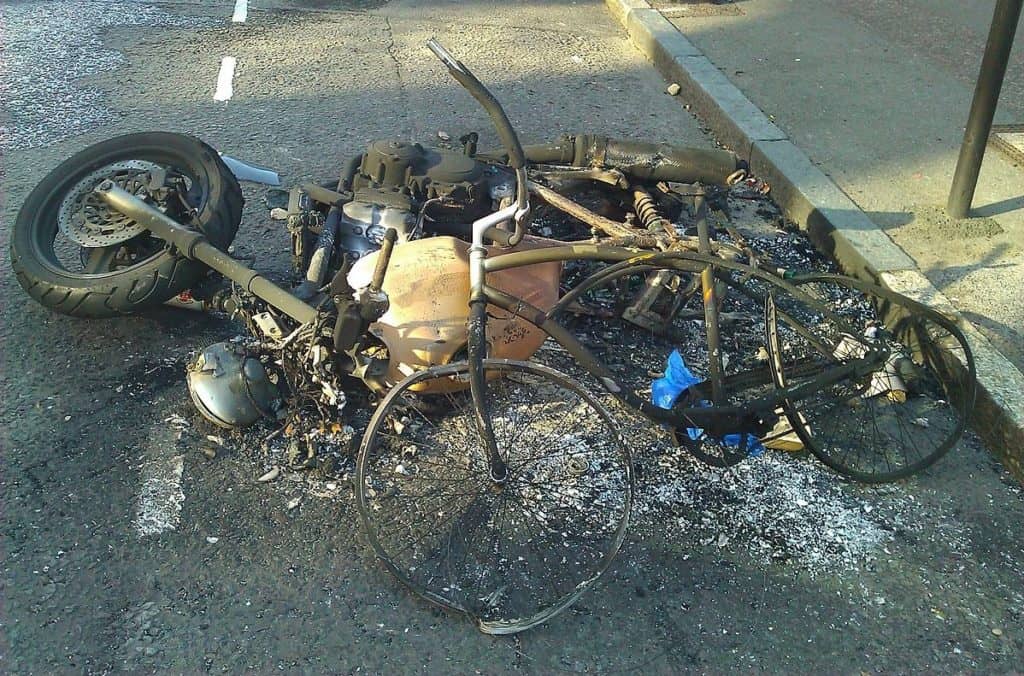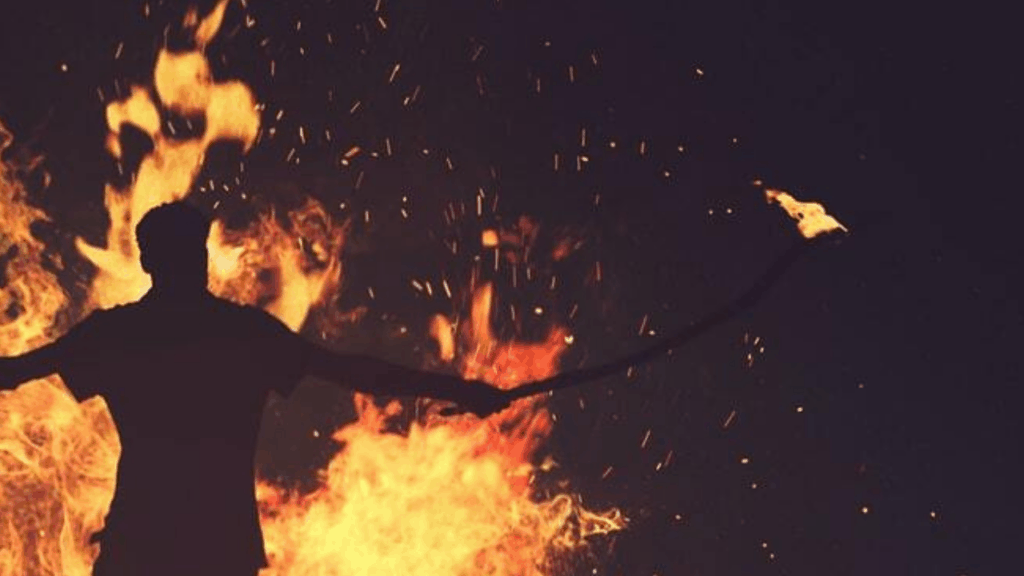
On August 11, a mob gathered around Pulakeshinagar Congress MLA R Akhanda Srinivasa Murthy’s house in Kaval Byrasandra, protesting an allegedly derogatory post on the Prophet Muhammed by his nephew. The mob soon turned violent, leading to clashes with the police that resulted in the imposition of curfew.
The police reportedly used tear gas shells and opened fire, killing three people, only after which order was restored late at night. While some have characterised this riot as an organised event, some others said it was a spontaneous reaction to a provocation. No definitive account of the events of that night has emerged yet.
This is not the first incident of communal violence Bengaluru has seen. In fact, despite its claims to cosmopolitanism, the city has been a site of communal violence many times over the last century.
1928 riot showed city could be communalised quickly
Take, for instance, the Bangalore Disturbances of 1928, better known as ‘Ganpati Galabhe’ (Ganpati Disturbances) or ‘Hindu-Muslim Gharshane’ (Hindu-Muslim conflict). An idol of Ganesha on the premises of the Anglo-Vernacular School in Sultanpet became a bone of contention between dominant-caste Hindus and Muslims in the area.
An editorial published in ‘Veerakesari’ – the newspaper then edited by right-wing nationalist Sitarama Sastry – encouraged the school students, who worshipped the idol, to build a small shelter for it. The school was located in front of municipal president Abbas Khan’s house, and it was believed that Abbas Khan considered the building of the shelter for the idol a provocation to Muslims in the area who had to cross it on their way to the mosque.
The incident soon escalated into communal violence, with the involvement of Congressmen like Ramlal Tiwari and H V Subhramanyam on one side, and Abbas Khan and his Muslim followers on the other.
The local press played a significant role in this conflagration by spreading rumours about the Muslim community. The administration chose to forbid worship at the site, which only led to a more sustained effort at restoring the idol (that had been temporarily removed for building the shelter).
The Bangalore Disturbances of 1928 saw the otherwise peaceful old city turn hostile, with youngsters shouting slogans and threatening residents. This incident showed that the city could be quickly communalised and turned into a site of violence.
Since 1928, Bengaluru has seen other incidents of communal violence – such as the one that broke out over the publication of a short story called ‘Muhammad the Idiot’ in the Deccan Herald on December 7, 1986. The story was not about Prophet Muhammad, yet it offended many Muslims, and the ensuring violence claimed 11 lives in police firing.
Bengaluru became communally sensitive by 1990s
The Ram Janmabhoomi movement of the late 1980s and early 90s inaugurated a series of communal clashes over the subsequent years. Notable among them was the violence in the wake of Babri Masjid’s demolition in 1992.
Among South Indian States, Karnataka was the worst affected. And within the State, most affected were the same towns and districts that had already witnessed riots in 1990 during L K Advani’s Rath Yatra. This included Bengaluru, where the opposition expressed by Muslims to the masjid’s demolition was met with a bandh from the Bharatiya Janata Party (BJP). Nineteen deaths were reported from the ensuing police firing.
The next major incident of communal violence was in 1994. By then, Karnataka had become communally sensitive due to years of religion-based political mobilisation.
The immediate cause of the 1994 violence, though, was purportedly the broadcast of an Urdu news bulletin on Doordarshan immediately after the Kannada news bulletin.
The violence did not take time to spread. It soon became clear that the issue was not merely linguistic – which had led to violence against Tamils in the city on account of the Cauvery water dispute in 1991 – but also communal. The locus of the violence was south Bengaluru, specifically areas like JJ Nagar, Chamrajpet, Byatarayananpura, KR Market and Kalasipalya, where lower middle-class and poorer Muslims lived.
The day after the broadcast, 300 people assembled in front of the Doordarshan office. They were part of pro-Kannada organisations, some of which, such as Mico Kannada Sangha, the Channakeshavapura Kannada Sangha, and the SKF Sangha, led agitations, dharnas and protest marches in different parts of the city over the next few days.
According to articles by Janaki Nair and Asghar Ali Engineer in the Economic and Political Weekly, a concerted attempt could be discerned to incite the Kannada-speaking Hindu population against the Muslim population of the city. This became more pronounced with the involvement of the BJP and the Akhil Bharatiya Vidyarthi Parishad (ABVP), which saw the agendas of Kannada and Hindu nationalists coalescing into a united front.
The protesters held a procession close to a mosque on a Friday, and the resulting violence led to loss of property and lives. Official figures put the death toll at 25, though unofficial counts put it higher. The violence didn’t stop even after the broadcast of the Urdu news bulletin was suspended, which showed that the violence was indeed communal in nature.

Communal violence not spontaneous
None of the incidents above were spontaneous outbursts of violence. This is in keeping with the work of scholars like Prof Paul K Brass, who have studied communal violence in India. Prof Brass has found that incidents of communal violence are usually “intergroup mass actions” that are “deliberately organised”, which can be said of the incidents described here as well.
He has found that such incidents can be divided into three phases:
- preparation phase
- activation phase, and
- interpretation phase
Preparation phase refers to the communal consciousness that is sought to be developed through an ongoing process in a place like Bengaluru. It is this consciousness that makes a place more vulnerable to communal violence.
Activation phase refers to the immediate cause attributed for communal violence, which, as in the incidents described here, seem innocuous enough to have been ignored without incident otherwise.
And the interpretation phase refers to the ways in which an incident of communal violence is characterised in public consciousness. This can be seen in the wake of all incidents of communal violence, where rival groups, usually political, seek to control the narrative about an incident.
This, in turn, can contribute to the presentation phase, which can then lay the ground for the next incident of communal violence. Prof Brass has called this the “institutionalised riot system”, which he has found in places where communal violence is almost endemic.
While Bengaluru may not have reached a stage where communal violence is endemic, clearly, incidents of violence over the last century show us the city is not immune to it. Hence it is incumbent upon us, citizens of the city, to be conscious of the possibility of such an eventuality, and guard against becoming implicated, even unwittingly, in the making of such a riot system.
References:
- Arif, Amina Muhammad. “Muslims in Bangalore: A Minority at Ease?” In Muslims in Indian Cities: Trajectories of Marginalisation, edited by Laurent Gayer and Christophe Jaffrelot, 287-310. London: Hurst, 2012.
- Brass, Paul K. Forms of Collective Violence: Riots, Pogroms, and Genocide in Modern India. Gurgaon: Three Essays Collective, 2006.
- Engineer, Asghar Ali. “Bangalore Violence: Linguistic or Communal?” Economic and Political Weekly 29, no. 44 (October 29, 1994): 2853-54.
- “Death Toll Reaches 16 in Rioting Over Short Story.” Associated Press, December 16, 1986.
- Nair, Janaki. The Promise of the Metropolis: Bangalore in the Twentieth Century. New Delhi: Oxford University Press, 2005.
- Nair, Janaki. “Kannada and the Politics of State Protection.” Economic and Political Weekly 29, no. 44 (October 29, 1994): 2854-58.
The author misses the point completely. The DJ Halli KJ Halli riots, are mob violence by one community against a siting schedule caste MLA, his family and neighbors. There was only community doing the violence that night. This has NEVER EVER happened in peaceful Bengaluru before.
Mr. Phanindra you cannot clap with one hand. You should see who is the beginner of violence too… hope you will understand